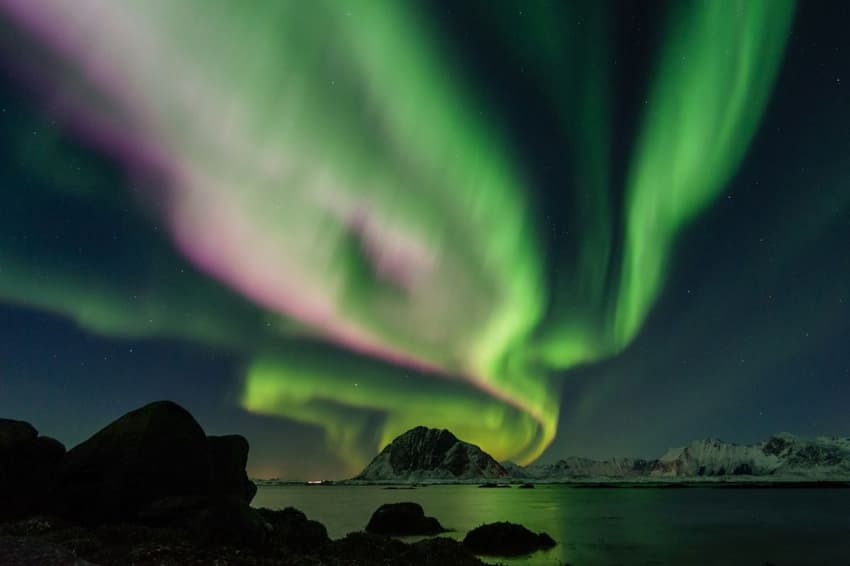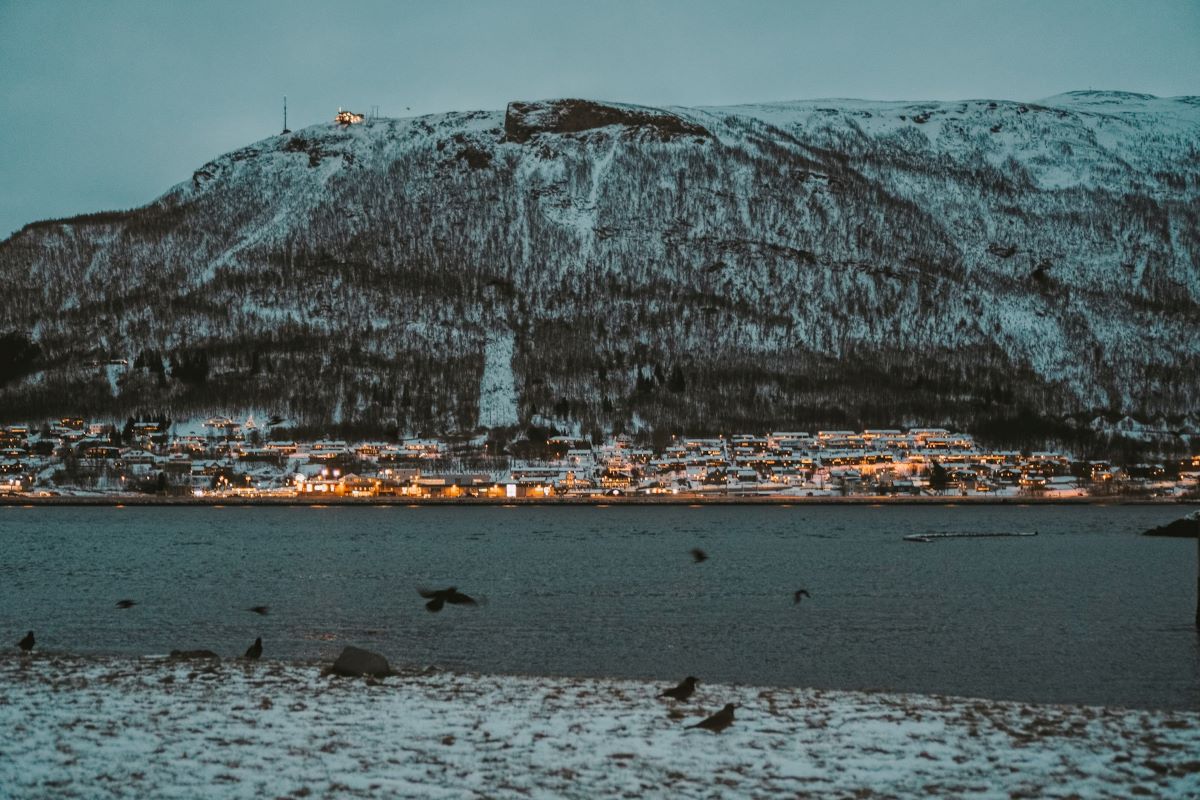What you need to know about Norway's polar night phenomenon

The sun has set over large parts of Norway and won't rise again until well into January. This is what you need to know about the polar night, and a couple of myths that need busting.
The sun set in Tromsø for the last time for more than 40 days this week in a natural phenomenon known as the polar night.
The polar night only happens within the polar circles. It occurs as the Earth is on an axis. Due to this axis, there are periods of no sunrise and no sunset at certain times of the year as the Earth rotates around the sun. It's why the country also gets period where the sun doesn't set.
This also means that different areas experience the polar night at different times. On the archipelago of Svalbard, halfway between the north pole and the mainland, the polar night begins earlier and lasts for much longer.
Tromsø sees a much shorter polar night where the sun sets in late November and doesn't rise until mid-January.
Lofoten has a Polar Night, which lasts about four weeks, while in Bodø, brief glimpses of sunlight appear, even if the sun doesn't rise over the horizon.
What is the polar night?
Your location dictates the type of polar night you will experience. At the borders of the Arctic Circle, there is a polar twilight, when what is known as a civil twilight occurs.
This means the sun is below the horizon by less than 6 degrees. This means that some light from the sun is visible, even if it doesn't rise.
Then, there is the civil polar night, where there is no civil twilight. Essentially, this means the sun is lower below the horizon, and there is less light. This is when the sun is between 6 and 12 degrees below the horizon. The civil polar night means only a faint glow is visible during midday.
The nautical polar night occurs when the sun is 12 to 18 degrees below the horizon. Then, only the stars offer illumination in what is known as astronomical twilight. This happens on Svalbard between December 12th and December 30th.
The most extreme is the astronomical polar night, where there is no astronomical twilight. Only a few dim stars will be visible to the naked eye at midday. This is only experienced at the North Pole and the South Pole.
How dark does it get?
As we've briefly explained, the darkness will depend on how far north you are and what type of polar night you experience.
While called the polar night, everything isn't pitch black. Instead, the landscape takes on more of a blue hue. As an example, we've included a picture of Tromsø during the polar night.

Pictured is the city of Tromsø in the middle of the "day" during the polar night. Photo by Yevgeniya Tyumina on Unsplash
Streetlights will also be kept on, meaning people can do their daily business. People in the northern regions also stay social during the long winter nights, something that southerners could learn from.
Ski slopes and cross-country courses will remain open and floodlit to keep people active. Other activities like dog sledging also remain popular.
The long nights also offer an excellent opportunity to see the Northern Lights.
Does the polar night cause a spike in depression and suicide?
Seasonal Affective Disorder (SAD) is a condition where a lack of sufficient light triggers depression. For this reason, many assume the mental health of residents plummets.
While many will feel fatigued during the winter months, a study in Tromsø found that the wellbeing of residents barely changed across the year – even if their sleep was worse during the polar night.
Researcher Kari Leibowitz found that one factor that may be contributing to a steady level of wellbeing in areas with the polar night is how locals generally see the winter.
READ ALSO: Five things you need to learn to love about winter in Norway
Her research found that the further north one lived, the more likely they were to have a favourable view of the winter.
This made it easier for them to deal with the polar night. For example, those living on Svalbard had a more positive view of the winter than those living in Tromsø, and those living in Tromsø saw things more positively than those in Oslo who do not experience a polar night.
As for suicides, many anecdotally will say that the Nordics have high suicide rates and that it must be due to the long winter nights.
Around 650 people in Norway take their lives every year, according to the Norwegian Institute of Public Health. The suicide rate in Norway is roughly in line with Europe, North America and Australia. The suicide rate has decreased since the 1990s also.
However, areas in northern Norway have typically been the areas with the highest suicide rates in recent years. Much lower populations in these areas means each suicide having a bigger impact on the overall rates.
Comments
See Also
The sun set in Tromsø for the last time for more than 40 days this week in a natural phenomenon known as the polar night.
The polar night only happens within the polar circles. It occurs as the Earth is on an axis. Due to this axis, there are periods of no sunrise and no sunset at certain times of the year as the Earth rotates around the sun. It's why the country also gets period where the sun doesn't set.
This also means that different areas experience the polar night at different times. On the archipelago of Svalbard, halfway between the north pole and the mainland, the polar night begins earlier and lasts for much longer.
Tromsø sees a much shorter polar night where the sun sets in late November and doesn't rise until mid-January.
Lofoten has a Polar Night, which lasts about four weeks, while in Bodø, brief glimpses of sunlight appear, even if the sun doesn't rise over the horizon.
What is the polar night?
Your location dictates the type of polar night you will experience. At the borders of the Arctic Circle, there is a polar twilight, when what is known as a civil twilight occurs.
This means the sun is below the horizon by less than 6 degrees. This means that some light from the sun is visible, even if it doesn't rise.
Then, there is the civil polar night, where there is no civil twilight. Essentially, this means the sun is lower below the horizon, and there is less light. This is when the sun is between 6 and 12 degrees below the horizon. The civil polar night means only a faint glow is visible during midday.
The nautical polar night occurs when the sun is 12 to 18 degrees below the horizon. Then, only the stars offer illumination in what is known as astronomical twilight. This happens on Svalbard between December 12th and December 30th.
The most extreme is the astronomical polar night, where there is no astronomical twilight. Only a few dim stars will be visible to the naked eye at midday. This is only experienced at the North Pole and the South Pole.
How dark does it get?
As we've briefly explained, the darkness will depend on how far north you are and what type of polar night you experience.
While called the polar night, everything isn't pitch black. Instead, the landscape takes on more of a blue hue. As an example, we've included a picture of Tromsø during the polar night.

Streetlights will also be kept on, meaning people can do their daily business. People in the northern regions also stay social during the long winter nights, something that southerners could learn from.
Ski slopes and cross-country courses will remain open and floodlit to keep people active. Other activities like dog sledging also remain popular.
The long nights also offer an excellent opportunity to see the Northern Lights.
Does the polar night cause a spike in depression and suicide?
Seasonal Affective Disorder (SAD) is a condition where a lack of sufficient light triggers depression. For this reason, many assume the mental health of residents plummets.
While many will feel fatigued during the winter months, a study in Tromsø found that the wellbeing of residents barely changed across the year – even if their sleep was worse during the polar night.
Researcher Kari Leibowitz found that one factor that may be contributing to a steady level of wellbeing in areas with the polar night is how locals generally see the winter.
READ ALSO: Five things you need to learn to love about winter in Norway
Her research found that the further north one lived, the more likely they were to have a favourable view of the winter.
This made it easier for them to deal with the polar night. For example, those living on Svalbard had a more positive view of the winter than those living in Tromsø, and those living in Tromsø saw things more positively than those in Oslo who do not experience a polar night.
As for suicides, many anecdotally will say that the Nordics have high suicide rates and that it must be due to the long winter nights.
Around 650 people in Norway take their lives every year, according to the Norwegian Institute of Public Health. The suicide rate in Norway is roughly in line with Europe, North America and Australia. The suicide rate has decreased since the 1990s also.
However, areas in northern Norway have typically been the areas with the highest suicide rates in recent years. Much lower populations in these areas means each suicide having a bigger impact on the overall rates.
Join the conversation in our comments section below. Share your own views and experience and if you have a question or suggestion for our journalists then email us at [email protected].
Please keep comments civil, constructive and on topic – and make sure to read our terms of use before getting involved.
Please log in here to leave a comment.